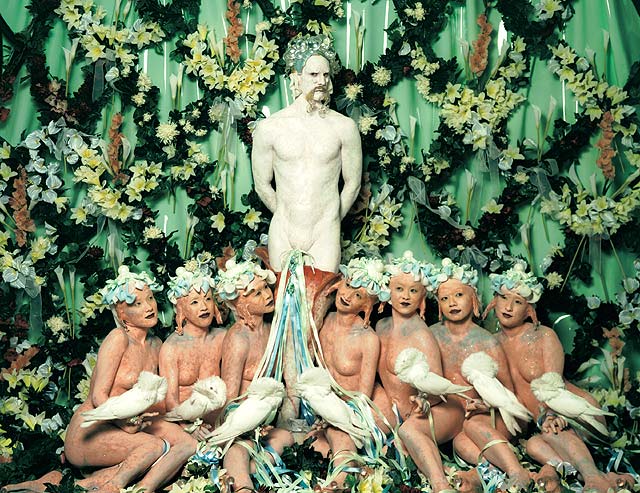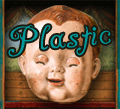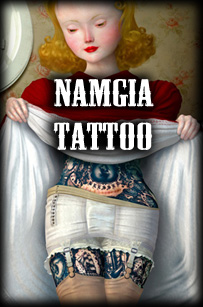19 giugno 2008
20 marzo 2008
17 marzo 2008
05 marzo 2008
Sadeo Hasegawa
Sadeo Hasegawa



(1945-1999)Sadao Hasegawa was born in a small town in northern Japan. He was an introspective lad who had few playmates and found his greatest delight in the wonders of the natural world. Later he found the same wonder in the myths, legends, artifacts and history of Africa, India, Thailand and other locales in southeast Asia. He selected and used those features of his multiple experiences in these places that best suited his unique view of the beauties and mysteries of male sexuality and erotica. Sadao saw no inconsistency in juxtaposing an African mask, a Thai animalist belief, and the details of Japanese bondage and domination.
Sadao was not interested in constructing a comprehensive and coherent philosophy or religion. He was a universalist who used what suited him to present his unique vision of male sexuality. To attempt to discern some sort of master cosmic plan or mythos behind Sadao’s use of symbols, artifacts, myths, and legends is a total misunderstanding of his weltanschanuung.
To enjoy Sadao’s art is to enjoy the variety of material he found related to the subject of his paintings. Art is a presentation of the artist’s view of his reality. Sadao saw unity in diversity and found pleasure in relating that diversity to his subject.
Sadao’s works first began appearing in Japanese gay magazines in the 1980s, Barazoku, Badi, and others. Sadao Hasegawa, his first book, appeared in 1990. It has gone through three reprints and is still available. Paradise Visions appeared in 1996 via a private printing. No further editions are available to my knowledge. All paintings from those two publications appearing here were scanned directly from those two publications. Some paintings from magazine publications are also included here but have not been scanned from the original source.



(1945-1999)Sadao Hasegawa was born in a small town in northern Japan. He was an introspective lad who had few playmates and found his greatest delight in the wonders of the natural world. Later he found the same wonder in the myths, legends, artifacts and history of Africa, India, Thailand and other locales in southeast Asia. He selected and used those features of his multiple experiences in these places that best suited his unique view of the beauties and mysteries of male sexuality and erotica. Sadao saw no inconsistency in juxtaposing an African mask, a Thai animalist belief, and the details of Japanese bondage and domination.
Sadao was not interested in constructing a comprehensive and coherent philosophy or religion. He was a universalist who used what suited him to present his unique vision of male sexuality. To attempt to discern some sort of master cosmic plan or mythos behind Sadao’s use of symbols, artifacts, myths, and legends is a total misunderstanding of his weltanschanuung.
To enjoy Sadao’s art is to enjoy the variety of material he found related to the subject of his paintings. Art is a presentation of the artist’s view of his reality. Sadao saw unity in diversity and found pleasure in relating that diversity to his subject.
Sadao’s works first began appearing in Japanese gay magazines in the 1980s, Barazoku, Badi, and others. Sadao Hasegawa, his first book, appeared in 1990. It has gone through three reprints and is still available. Paradise Visions appeared in 1996 via a private printing. No further editions are available to my knowledge. All paintings from those two publications appearing here were scanned directly from those two publications. Some paintings from magazine publications are also included here but have not been scanned from the original source.
nigel kent






The materials that I use are of paramount importance to me. The structured aquarelle paper, preferably of rough and heavy grain, is a surface that supports and conveys the message to the viewer -- the message itself usually being of a rough and heavy nature.
The medium is ink, and is practically always applied by Rapidograph pens. I use the pen like a painter might use a brush, the pen rapidly stroking the surface of the paper, building a matted, somewhat soft texture of minute curls, lines and points.
The original source of this matted surface structure was, rather strangely, originally revealed to me in a large work that I was doing of a full-frontal, well-hung, naked torso. After having completed the pubic hair area, I returned to the same drawing the following day -- and that particular area jumped out at me. I decided to experiment, and produced a small drawing of an erect dick using only a mass of tiny curls of ink. The conclusion proved very satisfactory.
I had found an original technique.
For want of a better name for my process, "curled" would have to suffice. I did work in dots at one time, but I found that another gay artist, Rex, was doing the same. So I switched -- first to tiny dashes. Then I discovered the whirls!
At all times the composition is arrived at directly onto the final surface. Therefore, there are never any preliminary sketches.
Titles are also important. They allow me to introduce an element of humour which I regard as an essential part of consensual behaviour and comraderie, and it gives the work a sort of long time in art.
A great body of my works are dick and balls concentrated. That stems from my street-wise crotch-watching. Also many of the action torsos are headless, which is very important to me, as my intention is that the viewer can choose to place himself, or a friend, within the circumstances of the fantasy that he is viewing. I hope that it opens the range of my work to a much wider audience. As it were, "Something for everyone".
Much, if not all, of my chosen subject matter is drawn from personal experiences. It can almost be regarded as auto-biographical, as it draws from my sexual experiences of some 30 years. Many of the figures represented are actual guys (real people): one-night-stands and friends. Elsewise, the guys are purely symbolical and have been drawn from my lusty past -- together with the free range of my lofty imagination
goh mishima











A burgeoning subculture emerged after World War II alongside the gay underground. The Yakuza -- the so-called "Japanese Mafia",with taciturn manliness, cropped haircuts, and elaborate body tattoos -- exerted a fascination for the artist that became a signature attribute of his later artwork. His friendship with Yukio Mishima was, not surprisingly, forged at a gymnasium. Both shared an interest in bodybuilding, karate, fencing, and other sports, as well as an admiration of the male body and the attributes of masculinity.
At Yukio Mishima's encouragement, the artist began to express his homoerotic desires in his artwork, and he began to draw the male nude in earnest, including the realistic depiction of genitals, which was illegal.
Around the same period, during the late 50s and early 60s, Mishima became familiar with and admired the drawings of Tom of Finland (1920-1991). Of the same generation, there are many similarities in their artistic output and socio-sexual impact.
After Yukio Mishima committed seppuku (ritualistic hari-kiri) in 1970, Goh Mishima's work took a darker, more violent turn. Reflecting the influence of his friend and mentor, Mishima began to depict bondage, torture, and masochism in his work.
04 marzo 2008
Iscriviti a:
Commenti (Atom)































